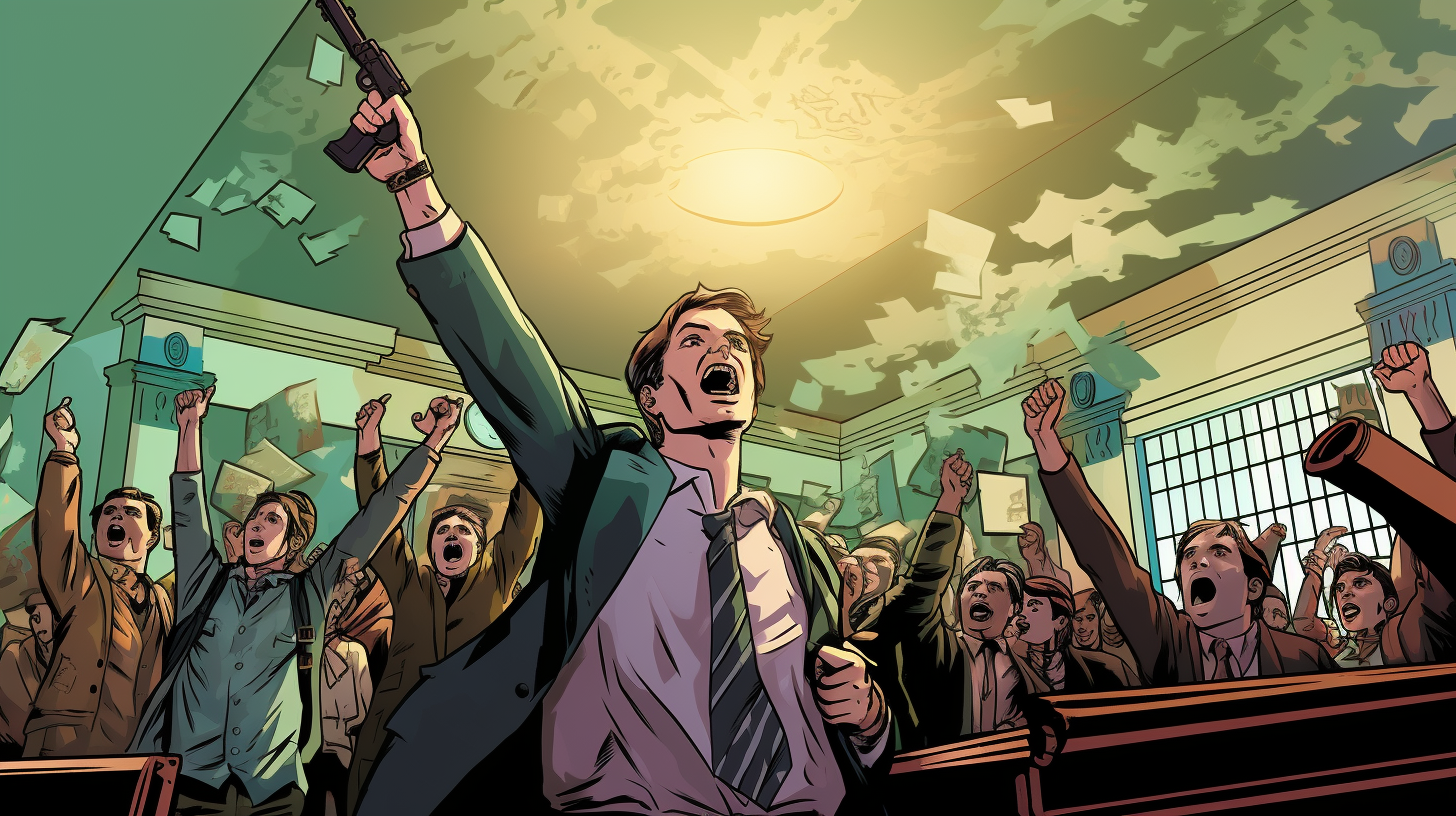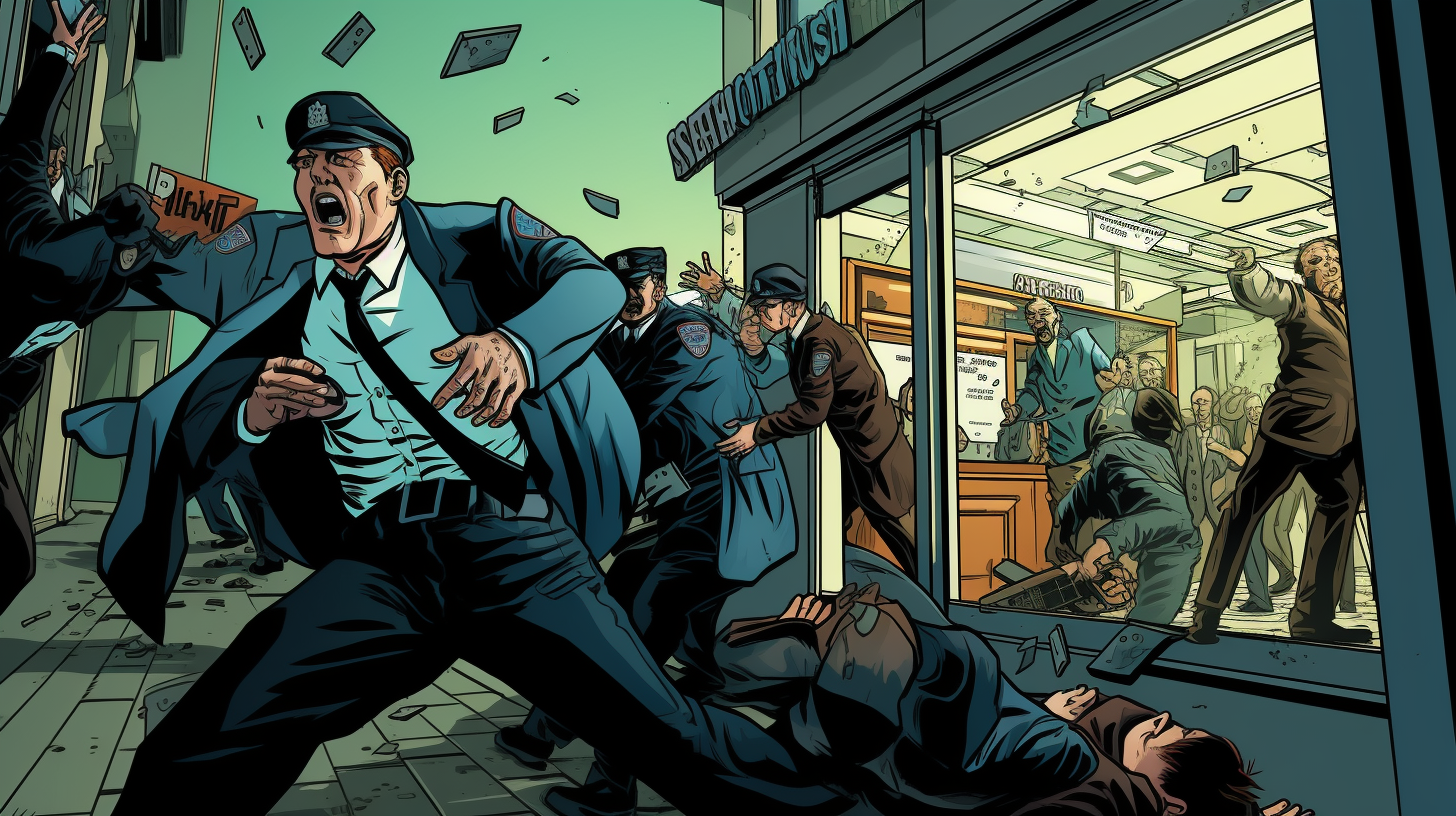How a botched bank robbery gave birth to Stockholm Syndrome 💸

🙋 BEFORE WE BEGIN 🙋 You can now listen to this newsletter on Spotify and on Apple Podcasts, or just press play below!
There’s an odd anniversary being discussed in mental health circles this week: it’s been 50 years since the inception of the term “Stockholm Syndrome”.
That’s odd, you might think. Who is blowing out candles to celebrate half a century of a term describing how relationships develop between a hostage and their captors? But then again, some people who work in mental health can be a bit odd.
Nonetheless! Some 50 years have been and gone since the term gained popular appeal. But where did it come from? Well, in this week’s newsletter I’m going to tell you.
What is Stockholm Syndrome? 🤔
First, it’s important to define what we mean by Stockholm Syndrome, as it has been used to define relationships that, thankfully, don't fit the true definition. Hollywood has a weird fascination with this idea.
Stockholm Syndrome officially refers to the bond that can develop between hostages and their captors in hostage-taking and kidnapping situations.
In some cases, hostages may develop sympathies for their captors and their cause — and even turn against the police. Rather than a diagnosis of a disorder, experts describe it as a psychological coping mechanism used by some hostages to endure being held captive and abused.
Reading that out loud, it seems like an oddly specific definition for an oddly specific experience. That’s because it was based on a singular event that took place in Stockholm, Sweden in 1973.
A botched bank robbery 🤑

Jan-Erik Olsson was a 32-year-old man who hadn’t had much luck in life. Born in Ekeby, a tiny village in southern Sweden with a Wikipedia page containing just 17 words, Olsson had fallen into a life of crime.
We meet him during a three-year jail sentence for burglary. During that time he became friends with Clark Olofsson, a serial bank robber whose string of creative prison escapes had made him a virtual celebrity in Sweden.
Olsson, by all accounts, was well-behaved in jail. So much so, he was released on a temporary furlough in August 1973 for good behaviour. He was supposed to return, but never did.
Instead, a few days after his release, he put on a woman’s curly wig, blue-tinted sunglasses, a dyed-black mustache and rouged cheeks, walked into a Stockholm bank shortly after it opened on Aug. 23, 1973, fired a submachine gun into the ceiling and yelled, in English with an American accent, “The party begins!” OIsson had become famous, but not for reason he first thought.
(Bad) Cops 👮 & (Good) Robbers 🥸

After Olsson’s somewhat bizarre entrance into the bank, he took the employees of the bank hostage, kickstarting what would become a six day siege. His demands? He wanted 3 million Swedish kronor (about $710,000 at the time) and a fast getaway car. Plus, he wanted to be united with his old mate, Clark Olofsson, the high profile escape artist he met in jail.
I believed a maniac had come into my life,” then-23-year-old bank clerk Kristin Enmark later told reporters. “I believed I was seeing something that could only happen in America.” Enmark had good reason to be scared: Olsson was armed to the teeth.
In addition to the machine gun he had procured, he had also brought reserve ammunition, plastic explosives, blasting caps, safety fuses, lengths of rope, a knife, wool socks, sunglasses, two walkie-talkies, and a transistor radio.
Olsson turned on his radio to listen out for any police chatter, tied up four of the bank employees and put them all in the vault, where he felt police wouldn’t risk an intervention through fear of wounding one of his hostages.
After the first day, he had shot a police officer in the hand and forced law enforcement to acquiesce with his request. A Ford Mustang was delivered along with the money he demanded, and his friend Oloffson except for one small detail: the car had no keys.
While Olsson was clearly agitated, and hostages would later report this, it was Oloffson’s arrival that things started to shift.
“When I came, they were terrified,” Olofsson said in 2019 on the podcast “Criminal.” “After five minutes, they were cool. I said, ‘Hey, take it easy, we’re going to fix this.’” He untied the three women and, walking around the bank for surveillance, found another employee, Sven Säfstrom, 24, hiding in a stock room. Säfstrom became the fourth hostage.
Over the next five days, something strange started to happen. The captors, and the captees became close. The former kept them comfortable and listened to their needs, and the latter happily did what the hostage takers asked.
“I fully trust Clark and the robber. I am not desperate. They haven’t done a thing to us,” Enmark said. “On the contrary, they have been very nice. But you know, Olof, what I am scared of is that the police will attack and cause us to die,” she then told the Swedish Prime Minister on a phone call from inside the vault.
The fear the police would do something stupid wasn’t without merit. During the course of the siege, they had snuck in and locked the hostage and their captors inside the vault, depriving them of access to the real world, and started drilling holes above the vault. Many of the hostages believed the police would tear gas them and their captives, fearing the confined space would eventually kill them.
During that time, Olsson and Olofsson became closer to their victims, giving them the lion’s share of the meagre food in Olsson’s bag. They traded stories about the lives, they became close. The police had asked Nils Bejerot, a local psychiatrist to consult on what was going through the minds of the hostages at the time.
He believed a “bond of friendship” would form, so much so it would prevent Olsson from inflicting harm on his captors. But it went so much further than that.
Self-preservation or syndrome? 🧑🔬

By the time the siege had been broken - police used the drilled holes to drop gas into the vault, forcing Olsson and Olofsson to give up. But after the vault doors were re-opened, something strange happened.
After opening the door, the police ordered the hostages out first, but they refused, fearful that Olsson and Olofsson would be killed by the police if left alone in the vault. Enmark and another hostage hugged and kissed Olsson, while another shook his hand, and fourth asked him to write to her. Only then did the hostages emerge, with the captives alongside them. But they went further. None of them would testify against either captor in court; instead, they began raising money for their defense.
Bejerot, the consulting psychiatrist, told police and reporters that the hostages had in some way, been brainwashed by their captives, who appeared to skillfully manipulate their captors into becoming human shields. It was only after the victims spoke about their experience that Stockholm Syndrome would develop its distinct flavour. A year later, it would hit the headlines again.
Patty Hearst, the granddaughter of publisher William Randolph Hearst, was taken and held hostage by the Symbionese Liberation Army, "an urban guerilla group", in 1974.
Hearst, it’s argued, developed a similar bond with her captors, and even helped them rob banks whilst in captivity. Upon her arrest in 1975, her lawyers argued she too had developed Stockholm Syndrome, but the term had not been considered an acceptable defence. Hearst was given seven years for the experience - but was later pardoned by Bill Clinton.
Today, Stockholm Syndrome lives in a grey area. It’s not formally recognised as a syndrome, and has been criticised as a gendered term to undermine a woman’s experience of being captive.
But Enmark, who left the bank and became a psychotherapist, said in 2016 that the hostages’ relationship with Olsson was more self-preservation than syndrome.
“I think it is a way of blaming the victim,” she said. “All the things I did was instinct of survival. I wanted to survive. I don’t think it’s so odd. What would you do?”
Happy Birthday, Stockholm Syndrome. 🎂
Things we learned this week 🤓
- 🤕 Your sensitivity to pain can predict who you vote for.
- 😰 What criticism from parents does to your teenage brain.
- 🎨 Creativity and Empathy much more connected than we first thought.
- 🏋️ Testosterone is more likely to make you a narcissist.
What you should do this week 📅
Become a member! This is the free version of The Brink, but there is a secret, extra special version that has things like:
- 🎤 Podcasts
- 📹 Video
- 🙋 AMAs - Ask me Anything and I’ll make a video an article for you to cut out and keep.
- 💆 Proper, researched ways of alleviating stress and anxiety.
It’s only $5 a month, or $50 for the year, which is 17% less than doing it monthly I’ve been told. What are you waiting for? Head here and click the "subscribe button".
I love you all. 💋





